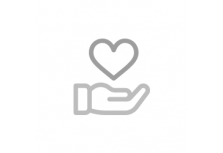Prancing Horse was founded in 1984 and today we operate from our 30 acre farm located in Hoffman (Moore County), NC. We attained nonprofit status in 1986, and are certified at the highest level – Premier - by the Professional Association of Therapeutic Horsemanship (PATH) International. Additionally, we are the only program of its kind in Moore County, NC and the surrounding area. With seven therapy horses and four therapy ponies, our PATH certified staff and trained volunteers provide ... Meer lezen
Prancing Horse was founded in 1984 and today we operate from our 30 acre farm located in Hoffman (Moore County), NC. We attained nonprofit status in 1986, and are certified at the highest level – Premier - by the Professional Association of Therapeutic Horsemanship (PATH) International. Additionally, we are the only program of its kind in Moore County, NC and the surrounding area. With seven therapy horses and four therapy ponies, our PATH certified staff and trained volunteers provide activities and therapy to clients with a wide spectrum of disability. Approximately 85% of our clients range in age from four to seventeen and come from all ethnicities and economic levels. No one is turned away for inability to pay for service.
The Prancing Horse therapeutic riding program operates from mid-February through May and again from September through mid-December, with a short six week summer session. Multiple weekly classes accommodate four to six participants (we have smaller class sizes for our younger students) so that every student receives focused, individual attention. Our clients include students with disability from the Moore County public school system, dependents with disability of active duty military personnel, veterans, and private clients.
Students entering our program undergo an initial assessment - a collaborative effort between our PATH certified instructor and the parent, caregiver, client and/or public school teacher to determine their program goals and the skills necessary to help them reach those goals. From there an individualized activity plan is put in place. Progress notes are taken during each session, student goals are readjusted as necessary, and a final evaluation is performed at the end of the 10 to 14-week program.
In addition, before each lesson, the horses are evaluated for soundness and all tack, arena and trail surfaces are inspected. During the lesson, the instructor monitors the students, volunteers, horses and equipment to ensure safety and procedural compliance. Initially, each student is accompanied by two side-walkers and a leader – all program volunteers. As the student progresses, s/he may ultimately be permitted to ride with fewer volunteers or even unassisted. Each lesson begins with upper and lower body warm up activities, then moves to activities and age appropriate games that are directly related to the student’s goals and objectives. For example, if a student goal is to walk, the lesson will focus on physical activities that will strengthen core and leg muscles, improve balance, range of motion, spatial awareness and eye tracking. If a life goal is to be able to read, the lesson will include activities to help the student learn to sit quietly, focus attention, process information, solve problems, remember, think critically and make decisions. Aids and props are also used as they may apply to the program. For instance, they may include brightly colored geometric designs; directional signs and flash cards used for math, spelling and reading activities; balls with facial expressions used to develop emotional awareness; cones used for navigating; and poles and rings used to develop core strength and balance. Activities may be conducted individually or in groups to promote social and communication skills. Throughout the lesson, each student receives positive reinforcement and encouragement from the instructor, volunteers and other students.
Our programs are diverse and inclusive. Our instructors and volunteers are dedicated to providing a safe, positive experience, not only for our students but also for their family and friends. It is designed to encourage and inspire our students to reach their highest potential and possibly attain goals once thought out of reach. An example of one measure of program success is a child with cerebral palsy who came to us from the Sandhills Children’s Center. One day, the child’s physical therapist came to observe a session. When the young boy was finished the teacher dismounted him and walked with him the short distance to the arena gate. The therapist was stunned because she had been working with him to take a few steps without his walker and had been unsuccessful. After his session, he walked nine steps (the therapist counted them) across the uneven footing of the arena – a big accomplishment! We want all of our clients to accomplish their goals and to leave the program with a greater sense of self-esteem, self-confidence, dignity, and a better quality of life.
Through training opportunities, other educational materials, and conversations with peers, we continually strive to remain abreast of and compliant with industry best practices. We also evaluate how we are doing as compared with other nonprofit organizations in our field. We monitor factors including program cost/per student; client/caregiver satisfaction; the expanding need for therapeutic horsemanship programs; cash reserves vs operating capital; and community name recognition and reputation.
Volledige tekst verbergen